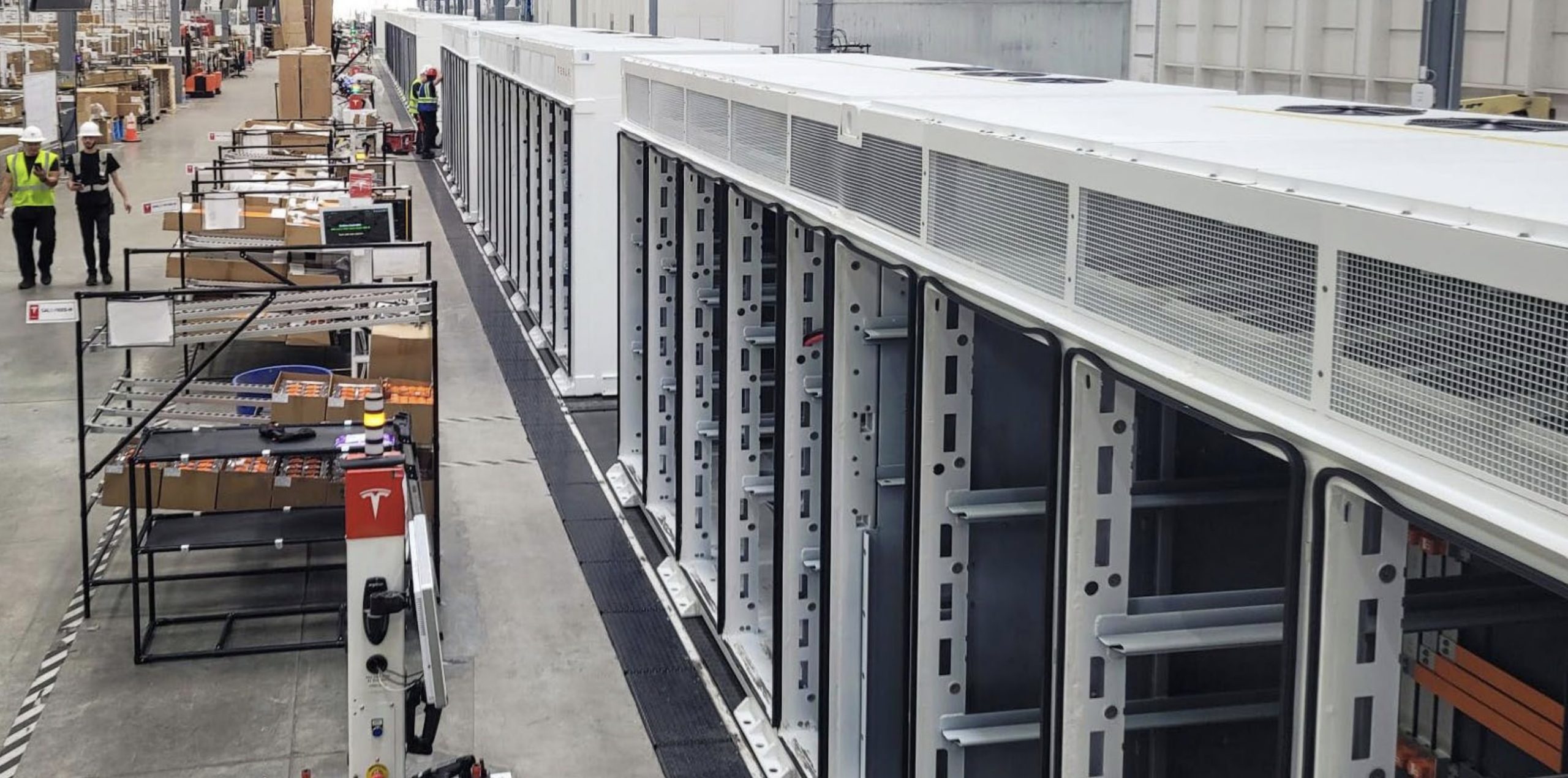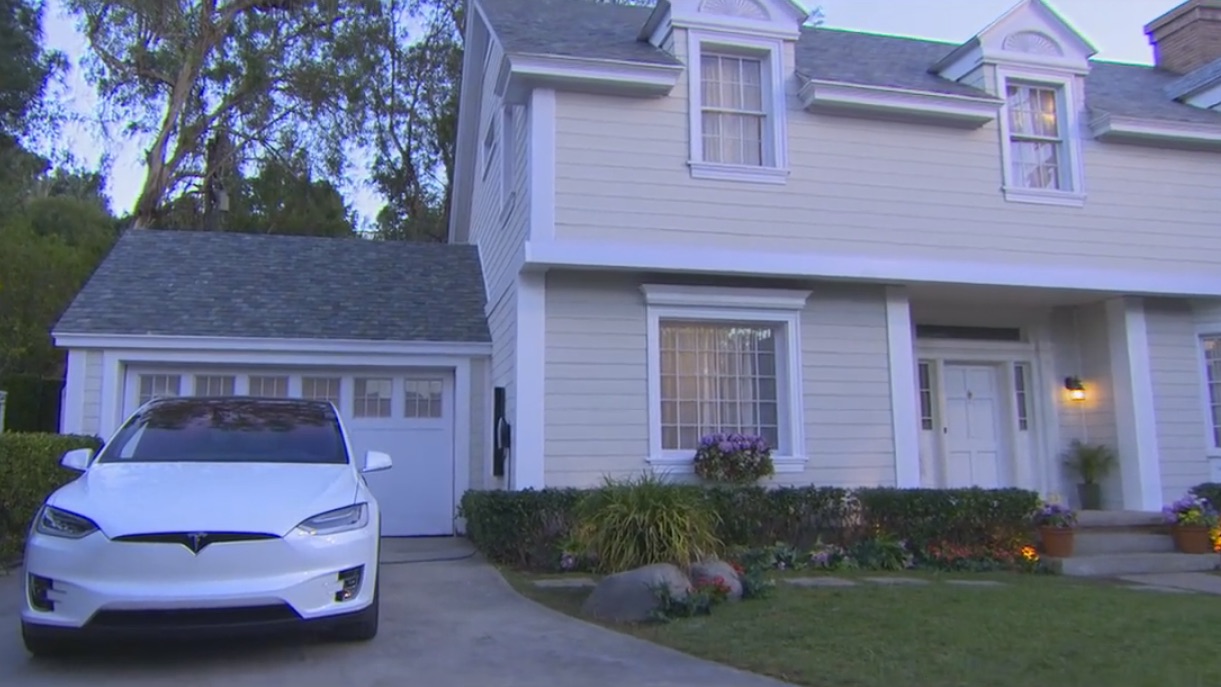

Energy
How much will a Tesla Solar Roof cost on my home?
Updated May 10, 2017: Tesla has provided an online calculator that attempts to compute the cost of a Tesla Solar Roof based on a home’s approximated square foot and number of stories. Single story homes are presumed to have double the roof surface area than a 2-story home with the same interior space. Here are some estimates on how much a Tesla Solar Roof will cost depending on the size of the home:
- 1.500 square feet (1 story) – $55,600
- 1,500 square feet (2 story) – $29,500
- 2.000 square feet (1 story) – $72,700
- 2,000 square feet (2 story) – $38,300
- 3,000 square feet (1 story) – $55,600
- 3,000 square feet (2 story) – $106,600
- 5,000 square feet (1 story) – $155,300
- 5,000 square feet (2 story) – $89,700
Solar Roof costs outlined are based on 60% solar coverage and does not take into account value of energy produced from the roof tiles themselves. The cost also does not factor in any local solar tax credits which varies by region.
—
Originally published post below:
Tesla’s new Solar Roof tiles are the hot topic of conversation right now. At the official reveal event, Elon Musk asked rhetorically, “So, why would you buy anything else?” In a new analysis, Consumer Reports (CR) tries to answer that question.
In the absence of pricing information from Tesla, Consumer Reports decided to make some assumptions of its own. People may quibble with them, but they at least establish a baseline that can be used to begin the discussion.
CR reached out to some knowledgeable roofing sources such as the Slate Roofing Contractors Association, the Tile Roofing Institute, and the folks behind the Remodeling 2016 Cost vs. Value Report. Assuming a typical roof size in the US of 3,000 square feet, it determined the average cost of a clay tile roof is $16,000, an asphalt shingle roof is $20,000 and a slate roof is $45,000.
CR then assumed the average annual utility bill for that typical home is $2,000. Multiplying that by the 30 year life span Tesla says customers can expect from their Solar Roof, that comes out to $60,000. Consumer Reports then backed out the $6,500 assumed cost of installing a Tesla Powerwall 2 from the projected cost of electricity and declared that a Tesla glass tile roof would have to cost no more than $73,500 in order to compete successfully with a normal asphalt shingle roof.
Note that in these calculations, the customer is expected to pay for 30 years of electricity up front. CR makes no adjustment for what the costs of financing that amount immediately might amount to over that same 30 year period. The analysis also does not factor in the location of the home, the angle of the roof, or its orientation toward the sun. Clearly, a roof in southern California will generate more electricity over its useful life than a roof in the northeast.
The team at CR also assume the combination of a solar roof and a Powerwall system will supply all of a home’s energy needs without the need to draw (and pay for) additional power from the grid. Finally, no allowance is made for the monthly fees many utility companies assess to homeowners who have residential solar systems. The industry position is that rooftop solar places an undue burden on the utility grid and forces the bills of other customers to increase.
Elon said last Friday the Tesla Solar Roof tiles will “look better than a normal roof, generate electricity, last longer, have better insulation, and actually have an installed cost that is less than a normal roof plus the cost of electricity.”
He is absolutely right about the aesthetics.” People like the idea of being energy efficient, but solar panels can be an eyesore,” says Giovanni Bozzolo, a partner at Roof4Less roofing in Seattle, Wash. “To be able to combine the energy savings with aesthetics would be a very big thing in the industry. But the pricing has to be right.”
So, will the pricing be right? After Consumer Reports checked all its sources, made all its assumptions, and crunched all its numbers, it said in order to be competitive, a Tuscan tile roof needs to cost less than $69,500 ($2,300 per 100 square foot). A smooth or textured tile roof needs to cost less than $73,500 ($2,450 per 100 square feet). A slate tile roof needs to cost less than $98,500 ($3,300 per 100 square feet).
Two important factors we don’t know are the cost of installation for a Solar Roof or the skill level installers will need. “Roofers aren’t electricians and vice versa, so I’m most interested in seeing how the costs of labor affect the end price to consumers,” says Vikram Aggarwal, CEO of EnergySage, an online marketplace of solar installers.
Elon Musk is right about one thing. The Solar Roof products we saw at Universal Studios last week are drop dead gorgeous. Any home owner would love to have one. The question is, will they be a luxury item, like a Tesla Model S, or affordable to a broad range of homeowners, like a Model 3? The answer is, no one knows. Asked for comment, a Tesla spokesperson told Consumer Reports, “We haven’t released details on pricing.”

Energy
Tesla starts hiring efforts for Texas Megafactory
Tesla’s Brookshire site is expected to produce 10,000 Megapacks annually, equal to 40 gigawatt hours of energy storage.

Tesla has officially begun hiring for its new $200 million Megafactory in Brookshire, Texas, a manufacturing hub expected to employ 1,500 people by 2028. The facility, which will build Tesla’s grid-scale Megapack batteries, is part of the company’s growing energy storage footprint.
Tesla’s hiring efforts for the Texas Megafactory are hinted at by the job openings currently active on the company’s Careers website.
Tesla’s Texas Megafactory
Tesla’s Brookshire site is expected to produce 10,000 Megapacks annually, equal to 40 gigawatt hours of energy storage, similar to the Lathrop Megafactory in California. Tesla’s Careers website currently lists over 30 job openings for the site, from engineers, welders, and project managers. Each of the openings is listed for Brookshire, Texas.
The company has leased two buildings in Empire West Business Park, with over $194 million in combined property and equipment investment. Tesla’s agreement with Waller County includes a 60% property tax abatement, contingent on meeting employment benchmarks: 375 jobs by 2026, 750 by 2027, and 1,500 by 2028, as noted in a report from the Houston Business Journal. Tesla is required to employ at least 1,500 workers in the facility through the rest of the 10-year abatement period.
Tesla’s clean energy boom
City officials have stated that Tesla’s arrival marks a turning point for the Texas city, as it highlights a shift from logistics to advanced clean energy manufacturing. Ramiro Bautista from Brookshire’s economic development office, highlighted this in a comment to the Journal.
“(Tesla) has great-paying jobs. Not just that, but the advanced manufacturing (and) clean energy is coming to the area,” he said. “So it’s not just your normal logistics manufacturing. This is advanced manufacturing coming to this area, and this brings a different type of job and investment into the local economy.”
Energy
Tesla and Samsung SDI in talks over new US battery storage deal: report
The update was related by industry sources and initially reported by South Korean news outlets.

Recent reports have suggested that Tesla and Samsung SDI are in talks over a potential partnership to supply batteries for large-scale energy storage systems (ESS).
The update was related by industry sources and initially reported by South Korean news outlets.
ESS batteries to be built at Samsung’s Indiana plant
As noted in a report from Korea JoongAng Daily, the demand for energy storage systems has been growing rapidly in North America, thanks in no small part to the surge in AI investments across numerous companies. With this in mind, Tesla has reportedly approached Samsung SDI about a potential battery supply deal.
The deal is reportedly worth over 3 trillion Korean won (approximately $2.11 billion) and will span three years, according to The Korea Global Economic Daily. A battery supply deal with Samsung SDI could make sense for Tesla as the company already has a grid-scale battery, the Megapack, which is perfect for industrial use. Samsung SDI could simply supply cells for the EV maker.
Production of the batteries would reportedly take place at Samsung SDI’s joint venture factory with Stellantis in Indiana, which is currently under construction. Samsung SDI recently announced plans to use part of that plant’s EV lines to produce cells for ESS, with a targeted capacity of 30 GWh by the end of next year.
Tesla and Samsung’s partnership
At present, only a handful of manufacturers, including Korea’s LG Energy Solution, Samsung SDI, SK On, and Japan’s Panasonic, are capable of producing energy storage-scale batteries domestically in the United States. A Samsung SDI official issued a comment about the matter, stating, “Nothing has been finalized regarding cooperation with Tesla.”
The possible energy storage system deal adds another layer to Tesla’s growing collaboration with Samsung, which is already in line as a partner in the upcoming production of Tesla’s AI5 and AI6 chips. Early sample manufacturing of the AI6 is expected to begin in South Korea, with mass production slated for Samsung’s Texas-based Taylor foundry when it starts operations.
The AI6 chip will power Tesla’s next wave of high-volume projects, including the Optimus humanoid robot and the autonomous Cybercab service. Musk has called the partnership with Samsung a “real collaboration,” adding that he personally plans to “walk the line” at the Taylor facility to speed up progress.
Energy
Tesla VP hints at Solar Roof comeback with Giga New York push
The comments hint at possible renewed life for the Solar Roof program, which has seen years of slow growth since its 2016 unveiling.

Tesla’s long-awaited and way underrated Solar Roof may finally be getting its moment. During the company’s Q3 2025 earnings call, Vice President of Energy Engineering Michael Snyder revealed that production of a new residential solar panel has started at Tesla’s Buffalo, New York facility, with shipments to customers beginning in the first quarter of 2026.
The comments hint at possible renewed life for the Solar Roof program, which has seen years of slow growth since its 2016 unveiling.
Tesla Energy’s strong demand
Responding to an investor question about Tesla’s energy backlog, Snyder said demand for Megapack and Powerwall continues to be “really strong” into next year. He also noted positive customer feedback for the company’s new Megablock product, which is expected to start shipping from Houston in 2026.
“We’re seeing remarkable growth in the demand for AI and data center applications as hyperscalers and utilities have seen the versatility of the Megapack product. It increases reliability and relieves grid constraints,” he said.
Snyder also highlighted a “surge in residential solar demand in the US,” attributing the spike to recent policy changes that incentivize home installations. Tesla expects this trend to continue into 2026, helped by the rollout of a new solar lease product that makes adoption more affordable for homeowners.
Possible Solar Roof revival?
Perhaps the most intriguing part of Snyder’s remarks, however, was Tesla’s move to begin production of its “residential solar panel” in Buffalo, New York. He described the new panels as having “industry-leading aesthetics” and shape performance, language Tesla has used to market its Solar Roof tiles in the past.
“We also began production of our Tesla residential solar panel in our Buffalo factory, and we will be shipping that to customers starting Q1. The panel has industry-leading aesthetics and shape performance and demonstrates our continued commitment to US manufacturing,” Snyder said during the Q3 2025 earnings call.
Snyder did not explicitly name the product, though his reference to aesthetics has fueled speculation that Tesla may finally be preparing a large-scale and serious rollout of its Solar Roof line.
Originally unveiled in 2016, the Solar Roof was intended to transform rooftops into clean energy generators without compromising on design. However, despite early enthusiasm, production and installation volumes have remained limited for years. In 2023, a report from Wood Mackenzie claimed that there were only 3,000 operational Solar Roof installations across the United States at the time, far below forecasts. In response, the official Tesla Energy account on X stated that the report was “incorrect by a large margin.”









